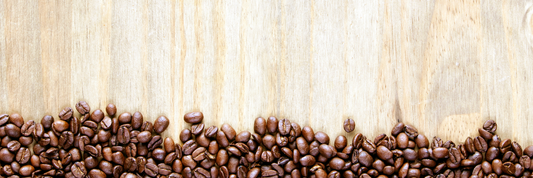Consumers today prioritize eco-friendly choices. Washi tape, far from just a craft supply, being a part of eco-packaging, offers businesses a chance to meet that demand. Crafted from natural materials and boasting versatility, it can enhance product packaging, displays, and light labeling. Explore how washi tape's sustainable qualities and diverse applications can elevate your brand's image and customer engagement.
- 9 Common Types of Tapes That You Should Know
- Top 10 Ice Cream Cup Design Ideas for Summer 2024
- 10 Easy Ideas Paper Plate Crafts to Recycle
What Washi Tape?
 Washi tape is a unique decorative tape that originates from Japan. The term “washi” translates to “Japanese paper,” with “wa” meaning Japanese and “shi” referring to paper. Traditionally, washi tape is made from natural fibers like bamboo, hemp, or mulberry, which contribute to its distinct qualities.
Washi tape is a unique decorative tape that originates from Japan. The term “washi” translates to “Japanese paper,” with “wa” meaning Japanese and “shi” referring to paper. Traditionally, washi tape is made from natural fibers like bamboo, hemp, or mulberry, which contribute to its distinct qualities.
Washi tape is strong yet lightweight, providing a semi-transparent appearance that adds a delicate touch to any project. One of its most appealing features is its repositionable nature, allowing users to apply and remove it without damaging surfaces or leaving a sticky residue.
What Is Washi Tape Used For?
Creative Applications
Washi tape is an incredibly versatile tool that can enhance a variety of creative projects. Here are some popular applications:
- Journaling & Scrapbooking: Washi tape adds color and personality to journals and scrapbooks, allowing users to embellish pages beautifully.
- Planner Decoration: Many individuals use washi tape to highlight important dates or add design elements to planners, making their daily organization both functional and visually appealing.
- DIY Cards & Art Projects: Craft enthusiasts enjoy incorporating washi tape into handmade cards and various art projects, providing endless opportunities for expression.
- Gift Wrapping: Instead of traditional ribbon or bows, washi tape can be a charming addition to gift wrapping, creating a personalized touch.
- Wall Art, Labels, Bookmarks, and Photo Frames: With its decorative charm, washi tape is perfect for creating wall art, custom labels, bookmarks, or even framing photos.
Business & Packaging Uses
Washi tape isn't just for personal use; it's also gaining popularity in the business realm. Here are some ways it can be integrated:
- Branding with Personality: Companies can use washi tape to stylishly seal gift boxes or packages, enhancing their branding efforts with creativity.
- Sealing Compostable Tissue Paper or Kraft Wrap: This eco-friendly tape is ideal for businesses that prioritize sustainable packaging solutions.
- Custom Labeling: Wasabi tape serves as a great alternative for labeling products without resorting to plastic stickers.
- Semantic Entities: DIY stationery, eco-wrapping, craft tape
Is Washi Tape Eco-Friendly?

Washi tape is considered to be an eco-friendly choice, primarily due to its composition. Made from renewable natural fibers, it can be biodegradable if it is not coated with plastic.
Often, washi tape is regarded as a low-waste alternative to plastic stickers or PVC tapes, making it a preferred option for environmentally conscious consumers. When selecting washi tape, it's beneficial to look for brands that utilize soy ink, non-toxic glues, and paper cores to ensure the least environmental impact.
Washi Tape vs Regular Tape – What’s the Difference?
|
Feature |
Washi Tape |
Regular Tape |
|
Material |
Plant-based paper |
PVC or polypropylene |
|
Adhesion |
Gentle, removable |
Strong, permanent |
|
Surface-safe? |
Yes (no residue) |
Can damage paper or walls |
|
Eco-friendly |
Yes (when plastic-free) |
No |
|
Creative appeal |
High (many patterns) |
Low (limited design) |
Washi tape distinctly stands out from regular tape not only in its materials and adhesion properties but also in its aesthetic appeal.
How to Choose Quality Washi Tape

When selecting washi tape, the thickness and texture play a significant role in determining its functionality and aesthetic appeal. Thicker tapes are generally more durable and better suited for projects that require longevity, such as decorating storage containers or crafting robust labels. On the other hand, thinner tapes can lend a more delicate touch, making them ideal for intricate designs on stationery or wrapping gifts. Additionally, you may prefer a matte finish for a softer look or a shiny texture for modern, vibrant projects. Choosing the right thickness and texture will depend on how you plan to use the tape and the effect you want to achieve.
Print Quality and Design Options
Another critical factor to consider is the print quality and the variety of design options available. High-quality washi tape should display sharp, clear images without smudges or fading. Look for brands that offer unique patterns, colors, and seasonal designs that appeal to your personal style. You may also find tapes that feature sustainable themes, helping you combine beauty with eco-consciousness. Investing in washi tape with diverse designs allows you to express your creativity in various projects while ensuring your choices align with your aesthetic preferences.
Adhesive That Sticks — but Not Too Much
The adhesive quality of washi tape is essential for ensuring it serves its purpose without causing damage. A good roll of tape should stick firmly yet be easy to peel off without leaving residue. This quality is particularly important if you plan to reposition or remove the tape without damaging the surface beneath. Opting for well-reviewed brands can help ensure that you are choosing a product with an ideal adhesive balance.
Plastic-Free Cores or Compostable Packaging
In a world increasingly concerned with waste, selecting washi tape that features plastic-free cores or compostable packaging can be a thoughtful choice. Seek brands committed to sustainability that use materials capable of breaking down naturally. This not only reduces your environmental footprint but also aligns with your values in supporting eco-friendly products. Each small decision, such as the packaging your tape comes in, contributes to a larger commitment to sustainability in your crafting habits.
Recommended for Eco-Conscious Users
- Brands with Certifications or Recycled Content: When browsing for washi tape, consider brands that invest in sustainability by acquiring certifications for eco-friendliness or incorporating recycled materials in their products. Certifications can provide peace of mind that the brands are genuinely committed to reducing their ecological impact.
- Simple Packaging (No Plastic Wrap, Reusable Containers): Focus on brands that minimize packaging waste. Tapes that come with minimal plastic and instead use paper or cardboard are preferable. Additionally, look for options that provide reusable containers which can be a great way to store tape and reduce waste.
Washi Tape Ideas for Eco-Friendly Living

- Use as Gift Wrap Ribbon Substitute: One of the best uses for washi tape is as an alternative to traditional gift wrap ribbons. It adds a decorative touch while helping you reduce waste. Choose colorful designs that complement your gift wrap for a cheerful presentation.
- Decorate Reusable Jars, Notebooks, Compost Bins: Washi tape can transform ordinary items into unique, personalized pieces. Use it to label reusable jars for snacks or pantry organization. Decorate notebooks with your favorite designs to make note-taking more enjoyable. You can also jazz up compost bins, making eco-friendly practices fun and visually appealing.
- Create Reusable Meal Prep Labels on Glass Containers: Meal prepping is easier when you can label your containers effectively. Use washi tape to create temporary labels for your meal prep. Write on the tape with non-permanent markers; they can be easily removed and replaced with new labels as needed, facilitating your meal planning while promoting sustainability.
- Tape Your Thank-You Notes Inside Eco-Packaging: When sending thank-you notes, use washi tape to secure them inside eco-friendly packaging. This not only shows appreciation but also adds a charming aesthetic while ensuring your messages are delivered thoughtfully.
Conclusion
Washi tape is a small tool with big personality. Its versatile nature allows you to enhance everyday items, making them not only more beautiful but also more reflective of your personal touch. Using washi tape in conjunction with sustainable practices, such as eco-friendly packaging and crafting habits, can amplify its positive impact on your environment.




